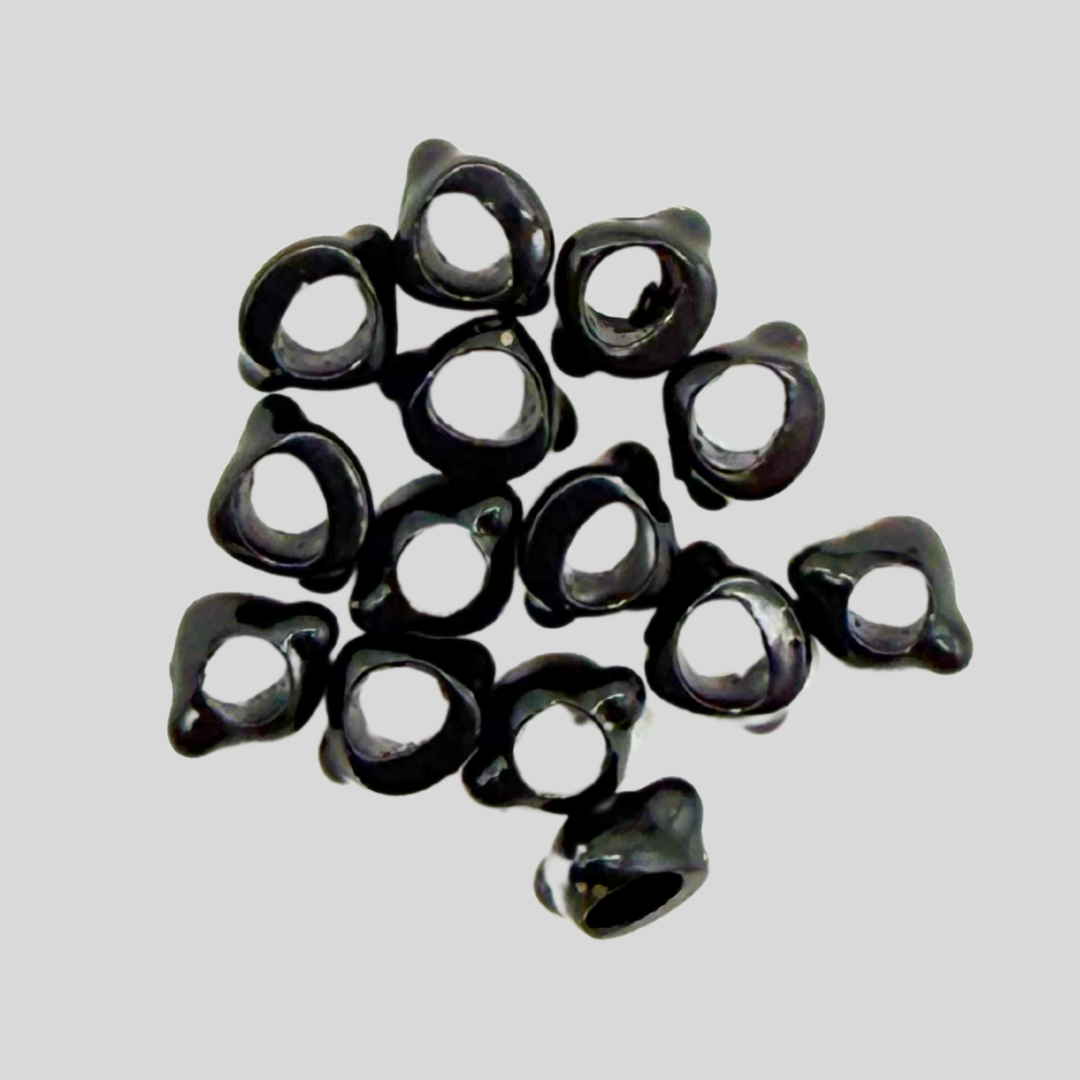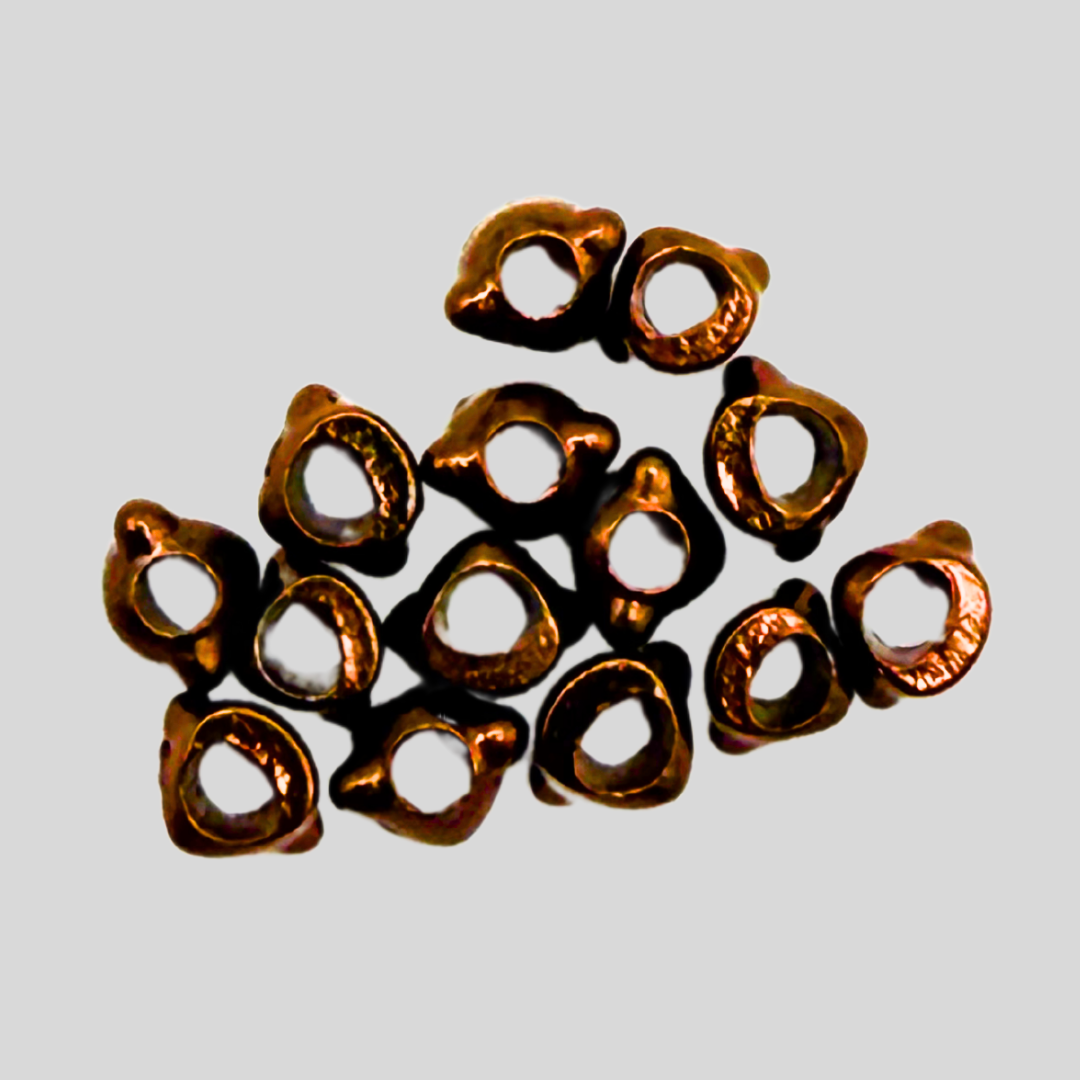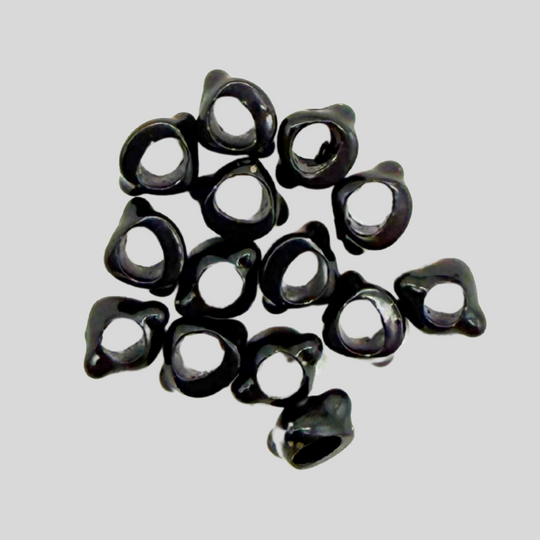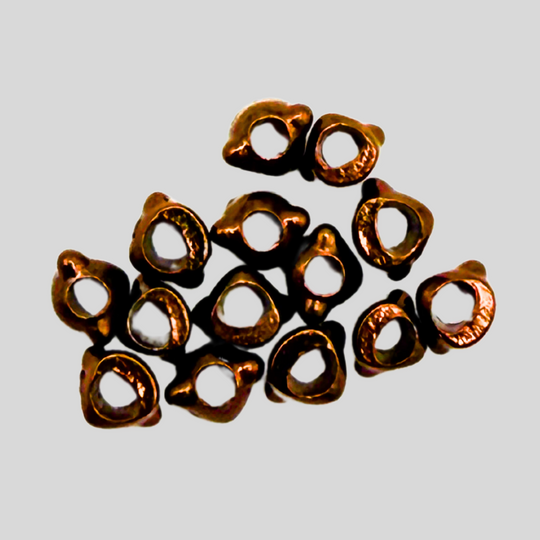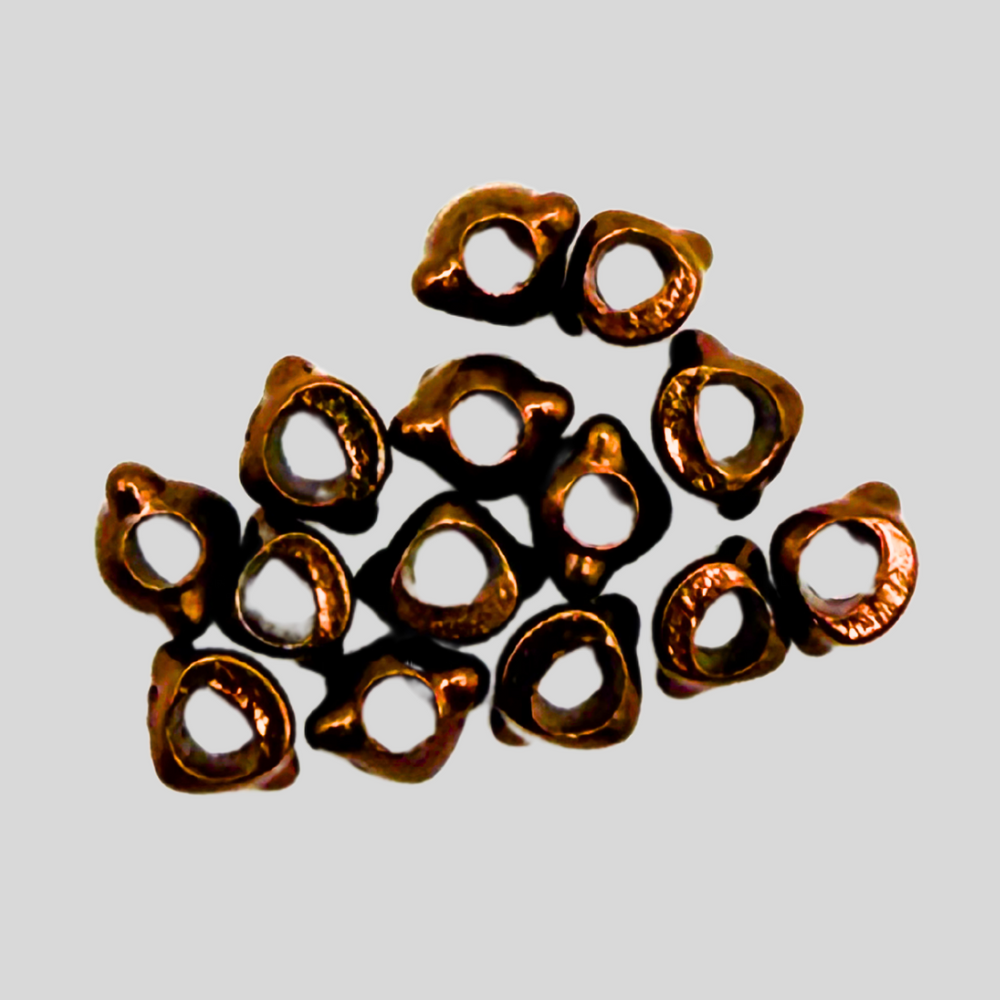Nymph-Head® Evolution™ Caddis tungsten beadheads
- Shipping calculated at checkout
- In stock, ready to ship
- Backordered, shipping soon
Move beyond the round bead. Tie fast-sinking caddis nymphs with anatomically molded heads for unmatched realism.
The Evolution Caddis tungsten beadhead is molded after the common caddis pupa head profile -- round and undersized with bulbous eyes.
Evolution beadheads are simpler to use and have greater versatility than ordinary beads.
The holes are slightly bigger to fit a much larger range of hook styles and sizes. This extra space is designed for lead or lead-free wire to be used with the beadhead to create better body profiles. It also allows you to create neater flies by hiding excess materials, eliminating the ugly “thread collar” so typical of many beadhead nymph patterns
Take your tying and fishing to the next level by adding the final, previously impossible, element of realism to your caddis nymphs.
Quantity per pack: 15 beads
Step-By-Step Instructions on tying the NH Evolution Caddis Pupa
-
Realistic profile
Achieve the unique “head arched down on a curved body” caddis pupa profile. The Evolution Caddis beadhead is shaped to naturally tilt forward on the hook.
Accurate proportion
Match the distinct caddis proportion of a small head attached to a large body. The Evolution Caddis beadhead is designed for smaller beads to fit on larger hooks.
Tungsten weight
100% pure tungsten for the fastest-sinking nymphs.
Natural colors
Brown, black, and olive with an anodized finish. -
Extra Small
Fits hook sizes #18, #16, #14.
Roughly equivalent to 3/32" (2.4 mm) round beads.Small
Fits hook sizes #14, #12.
Roughly equivalent to 7/64" (2.8 mm) round beads.Medium
Fits hook sizes #12, #10.
Roughly equivalent to 1/8" (3.2 mm) round beads.Large
Fits hook sizes #10, #8.
Roughly equivalent to 5/32" (4.0 mm) round beads. - Q: Will the Evolution beadhead help me tie better flies and catch more fish?
A: Yes, it should in most fishing situations. In very fast, turbulent water such as rapids where trout are forced to make quick, instant “eating decisions” then the specific beadhead profile is less important. However, on rivers, streams, lakes and spring creeks where trout have more time to inspect and scrutinize your nymph, then any opportunity to improve your fly profile should be taken and the insect head and thorax area is a significant one. Think about the attention to detail and specific materials used by fly designers to produce perfect imitation wing-cases, thorax & abdomen colors, tails, body segmentation and other bug parts! Fly tying beads are no different and the Evolution beadhead range now enables the same level of detail not possible before. This contributes towards producing a better fly.
Another way to answer this question is to say you will not catch less fish! If you believe that weight is the only benefit of a tungsten bead, then the Evolution™ tungsten bead still provides that weight and you should expect to do the same as you usually do when you go fishing. However, we believe the combination of weight + profile + color gives added benefit and ultimately should allow you to produce a more effective nymph.
Q: Why are the holes at the back and front of the Evolution beadheads bigger than I am used to?
A: We created more space for a number of reasons:
We want the bead to fit a much wider range of hook styles and sizes. The bigger holes let you easily slip the bead around the bend of any hook. We also want to eliminate the ugly “thread collar” so typical of many beadhead nymph patterns. Creating more space inside the back of the bead allows you to bury any excess materials and your tying thread out of sight. Much neater flies!
We created more space to easily allow lead or lead-free wire to be used in conjunction with the beadhead to create better body profiles (and add more weight if needed). This is particularly relevant with the Stonefly and Mayfly Clinger & Crawler beadheads which have a flat, broad profile and tying in this way allows you to tie the right body profile and a heavier fly (see example photo below).
Q: How does the size and weight of an Evolution™ tungsten beadhead compare to that of a round bead?
A: As a general rule, they are about the same size and weight as a round tungsten bead you would use on a particular hook size. However, this will vary between the 4 different styles in the Evolution™ family. For example, the Stonefly bead (a big bug) is typically bigger/heaver and a Caddis (a small head on large body) is typically smaller/lighter than standard, round beads.
Q: Are you saying the Evolution beadhead gives the exact replica of every species of mayfly, caddis and stonefly?
A: No way! Entomologists please don’t get too excited! Given the vast diversity of aquatic insect life on the planet, Flymen Fishing Company is not claiming that every Evolution Beadhead reflects the exact size, shape, and color of all family’s within the mayfly, caddis and stonefly orders of insects! However, each insect order does for the most part tend to have their own distinctive head shape and we have managed to create a good “generalized” profile of the most common nymphs fly fishermen are trying to imitate. We believe the Evolution Beadhead does signify a considerable improvement over previous beads to date through its imitation of more accurate and proportionate natural insect head profiles.


